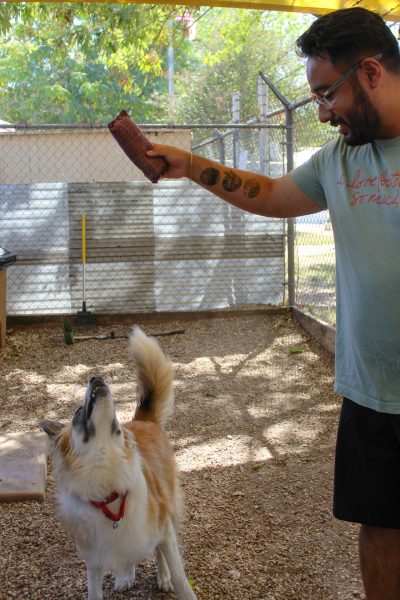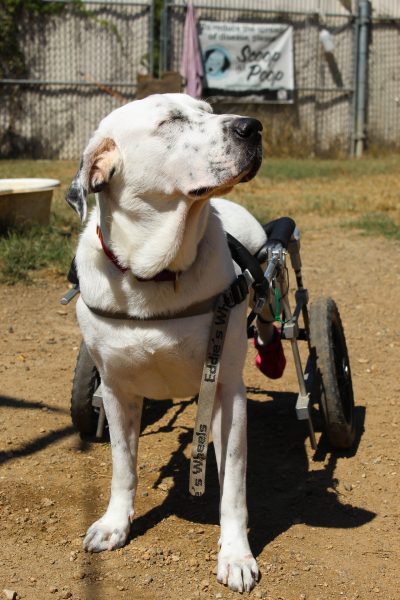Nov 07, 2024
In Huancayo, Peru, a city of 122,000 nestled in the Andes, stray dogs roam freely. This scene, common throughout much of Latin America, stands in stark contrast to the pristine streets of many American cities. But the absence of visible strays in the U.S. doesn’t mean the problem doesn’t exist — it’s just hidden behind shelter walls.
My recent visit to my grandmother’s home in Huancayo after years away was a reminder of this reality. The streets teemed with dogs of all breeds and sizes, from German shepherd mixes to hairless Peruvian dogs. The sight was jarring, even for someone who grew up understanding this was normal.
Returning to Austin, Texas, I decided to explore how my adopted city handles its homeless dog population. My journey led me to Austin Pets Alive! (APA), a nonprofit and no-kill shelter housing 328 dogs in shelter and 728 in foster (as of September), many of whom are long stay dogs – meaning they have been in shelter care for over 300 days. The dedication of the staff was inspiring, but the experience left me with a troubling realization: In the U.S., we’ve simply moved our stray dog problem out of sight.
“Building more shelters isn’t the answer — it’s just creating more places to warehouse animals,” Luis Sanchez, director of public relations at Austin Pets Alive!, said. “The goal isn’t to find better ways to house dogs in kennels. The goal is to create systems and communities where they don’t need to be in kennels in the first place.”

American shelters, while providing a vital service, inadvertently contribute to our collective blindness toward the issue of homeless animals. When I mentioned my plans to visit APA to friends, their responses were telling: “You’re so brave,” or “I couldn’t do that, honestly.” These well-meaning comments reveal a deeper societal discomfort with confronting the reality of animal homelessness.
The scale of animal homelessness in America is staggering, yet largely invisible. Each year, approximately 6.3 million companion animals enter U.S. shelters — roughly split between dogs and cats. While this represents progress from the 7.2 million annual intakes in 2011, the numbers remain daunting. In Austin, however, a remarkable transformation has occurred. Since 2008, Austin Pets Alive! has helped save over 120,000 animals, contributing to the city’s impressive 98% live-release rate. This success story stands in sharp contrast to the broader national picture, where approximately 390,000 dogs are still euthanized annually in shelters. Austin’s achievement as the nation’s largest and longest-running no-kill city proves that change is possible, but it also highlights how much work remains to be done across the country.
This avoidance is part of a larger problem. By relegating homeless dogs to shelters — many of which are high-kill facilities — we create a false sense that the issue is under control. We don’t see dogs roaming our streets, so we assume the problem doesn’t exist or has been solved. This “out of sight, out of mind” mentality allows us to turn a blind eye to a crisis that continues to plague our communities.

The contrast between Huancayo and Austin illustrates two different approaches to the same problem. In Peru, the issue is visible but largely unaddressed. In the U.S., we’ve hidden it behind shelter walls, creating an illusion of control while failing to address root causes.
Neither approach is ideal. The solution lies not in hiding the problem or ignoring it, but in actively engaging with it. We need to confront the discomfort we feel when faced with animal homelessness and channel it into action. This means supporting no-kill shelters, promoting adoption and fostering, and advocating for spay and neuter programs.
Moreover, we must recognize that avoiding shelters because they make us sad only perpetuates the cycle. By facing this reality head-on — visiting shelters, volunteering, fostering or adopting — we can begin to make a real difference. It’s only by acknowledging the problem that we can hope to solve it.
The stray dogs of Huancayo and the shelter dogs of Austin are two sides of the same coin. They represent a global challenge that requires our attention, compassion and action. It’s time we stop averting our eyes and start opening our hearts and homes to these animals in need.
So, the next time you pass your local animal shelter, don’t look away. Step inside. Confront the reality. Ask yourself: what can I do to help?
Source: Austin Pets Alive












